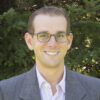“Capable leadership can use authority wisely to contribute to solidarity and equality.” A memorable line from the movie The Incredibles is said as Syndrome captures the Incredible family and explains his grandiose plan to the captured heroes “I’ll sell my inventions so that everyone can be superheroes. Everyone can be super! … And when everyone’s super, no one will be.” Syndrome’s reasoning, derived from his jealousy of the Incredibles, is similar to that of Korach in this week’s parasha. Korach, the oldest son of Amram’s younger brother, was a first cousin of Moses. Yet he was not awarded any leadership position in Israel- neither president, priest nor prophet. Therefore, Korach started an anti-Moses campaign, stirring up the crowds against Moses with slogans such as “You have gone too far! For all the community are holy!” and ” Why then do you raise yourselves above God’s congregation?” Korach felt that if he couldn’t be a leader, then no one should be able to be one. Korach preached complete equality, but in reality, he was only interested in Moses’ demise. To paraphrase Syndrome, Korah knew that when everyone is a leader, no one is really a leader. Once every seven years, the […]

















